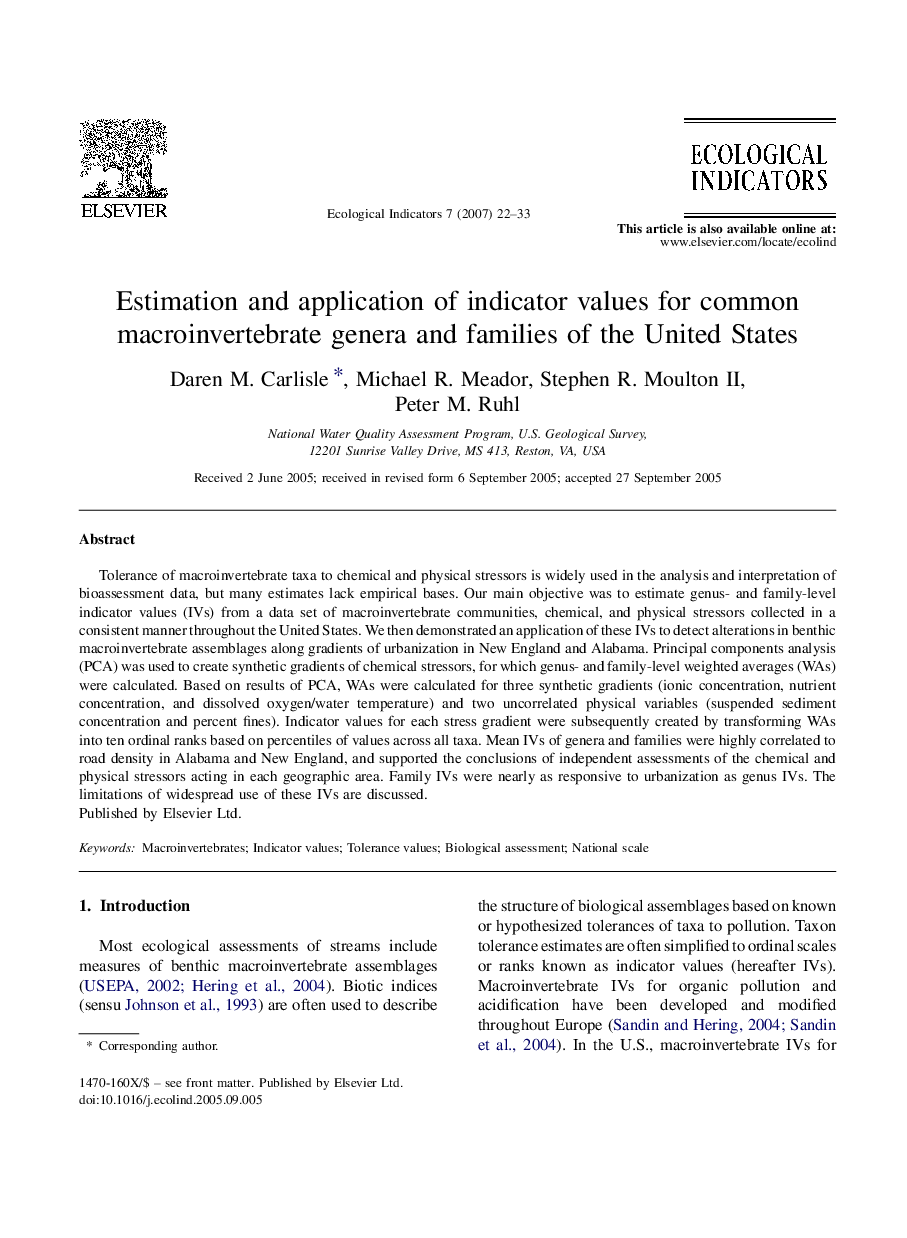| Article ID | Journal | Published Year | Pages | File Type |
|---|---|---|---|---|
| 4374636 | Ecological Indicators | 2007 | 12 Pages |
Tolerance of macroinvertebrate taxa to chemical and physical stressors is widely used in the analysis and interpretation of bioassessment data, but many estimates lack empirical bases. Our main objective was to estimate genus- and family-level indicator values (IVs) from a data set of macroinvertebrate communities, chemical, and physical stressors collected in a consistent manner throughout the United States. We then demonstrated an application of these IVs to detect alterations in benthic macroinvertebrate assemblages along gradients of urbanization in New England and Alabama. Principal components analysis (PCA) was used to create synthetic gradients of chemical stressors, for which genus- and family-level weighted averages (WAs) were calculated. Based on results of PCA, WAs were calculated for three synthetic gradients (ionic concentration, nutrient concentration, and dissolved oxygen/water temperature) and two uncorrelated physical variables (suspended sediment concentration and percent fines). Indicator values for each stress gradient were subsequently created by transforming WAs into ten ordinal ranks based on percentiles of values across all taxa. Mean IVs of genera and families were highly correlated to road density in Alabama and New England, and supported the conclusions of independent assessments of the chemical and physical stressors acting in each geographic area. Family IVs were nearly as responsive to urbanization as genus IVs. The limitations of widespread use of these IVs are discussed.
